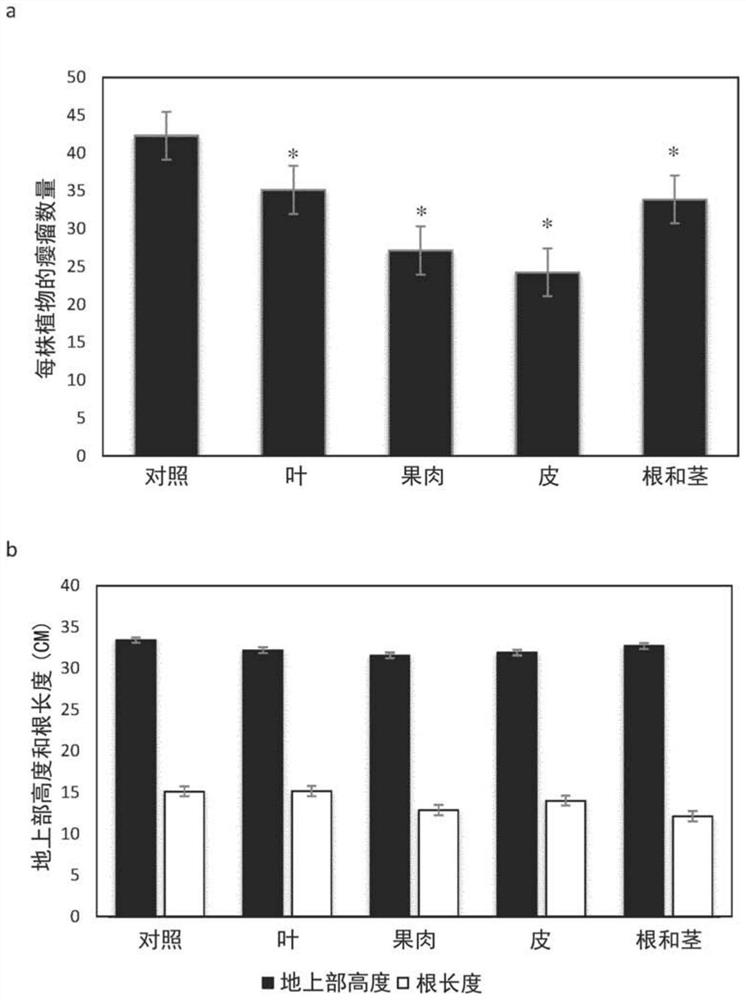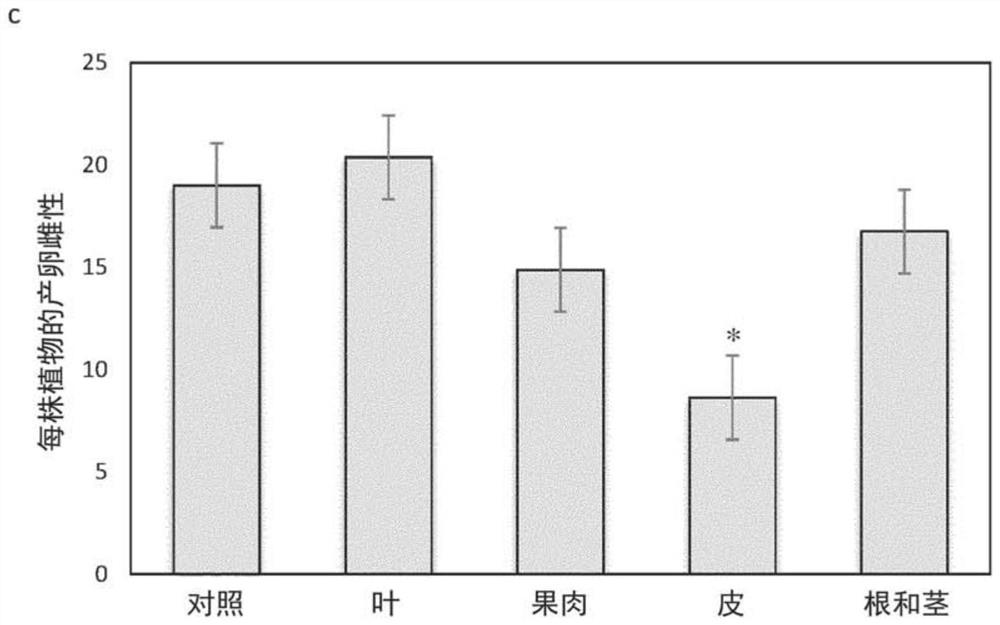Plant extract for controlling parasitic nematodes
A technology for extracts and plants, applied in the field of preventing and controlling plant diseases, extracts of cucurbit plants or their parts, can solve problems such as harmful gene modification, and achieve the effect of preventing damage
- Summary
- Abstract
- Description
- Claims
- Application Information
AI Technical Summary
Problems solved by technology
Method used
Image
Examples
preparation example Construction
[0047] A typical (fresh) peel extract preparation process involves washing the fruits as deemed necessary and peeling them manually or mechanically. These skins are then collected and blended, mixed or ground to obtain a slurry. In one embodiment, the blending or mixing is preferably continued for at least 1 or 2 minutes, especially 2 to 10 minutes.
[0048] The solvent used in the process of preparing the plant extract is preferably selected from the group consisting of ethanol, methanol, hexane, water or any suitable buffer such as for example an aqueous based buffer with a pH range of 5 to 8 (eg, sodium phosphate buffer, potassium phosphate buffer, Tris buffer, phosphate buffered saline, or borate buffered saline), including combinations thereof. In a specific embodiment, the solvent is water.
[0049] Different types of extraction methods are possible. In one embodiment, the at least Extraction step (mixing and optionally sieving). This is also known as a cold extract...
Embodiment 1
[0131] Example 1: Using fresh material from different parts of the squash (Cucurbita moschata) 'Muscat' Prepared cold extracts: aerial application to rice Root-knot nematode Meloidogyne graminicola Systemic Defense Activation Experiment
[0132] In this experiment, the systemic defense-inducing effect of five cold plant extracts from different fresh plant parts of squash 'Muscat' was investigated in rice against the root-knot nematode Meloidogyne graminearum by inoculating roots with the nematode The cold extract was sprayed on the shoot of rice for 24 hours. Root galls were counted after 14 days and plant length was measured. The number of ovipositing females in the infected root system was evaluated as a measure of nematode development. The results showed that cold extracts of fresh material from different plant parts of squash 'Muscat' all had systemic defense-inducing activity against root-knot nematodes, in which the number of galls per plant was significantly ...
Embodiment 2
[0133] Embodiment 2: to rice Systemicity of the root-knot nematode Meloidogyne graminicola defense activation experiment
[0134] In this experiment, skins (Cucurbitaceae Peel Extract: COPE) from different plants of the Cucurbitaceae family (including cucumber, squash 'Muscat' and zucchini) were sprayed 24 hours before root-knot nematode inoculation on the roots. to the above ground. Nematode development was assessed by dividing nematodes in the interior of the root tissue into four classes: second stage larvae (J2), developing larvae (J3 / J4), juvenile females and ovipositing females. No significant effects on shoot or root growth were observed ( figure 2 a). For all extracts, the number of galls was reduced by approximately 50% ( figure 2 b). A strong negative effect on nematode development in rice roots was observed, mainly for zucchini and pumpkin 'Muscat' extracts, in which few egg-laying females were found in rice roots ( figure 2 c).
PUM
 Login to View More
Login to View More Abstract
Description
Claims
Application Information
 Login to View More
Login to View More - R&D
- Intellectual Property
- Life Sciences
- Materials
- Tech Scout
- Unparalleled Data Quality
- Higher Quality Content
- 60% Fewer Hallucinations
Browse by: Latest US Patents, China's latest patents, Technical Efficacy Thesaurus, Application Domain, Technology Topic, Popular Technical Reports.
© 2025 PatSnap. All rights reserved.Legal|Privacy policy|Modern Slavery Act Transparency Statement|Sitemap|About US| Contact US: help@patsnap.com



